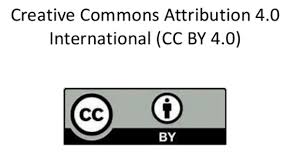Seasonal variation of bacteriological parameters of rui (Labeo rohita) and kalibaus (Labeo calbasu) collected from the Hakaluki Haor, Bangladesh
DOI:
https://doi.org/10.47440/JAFE.2025.6106Keywords:
Seasonal variation, Bacterial flora, Hakaluki haor, Coliform bacteriaAbstract
The fish in situ bacterial flora correlated with the aquatic environment. The higher initial bacterial flora in fish ultimately affects the storage life and quality of the products. The present study aimed to collect 36 samples of Rui (Labeo rohita) and Kalibaus (Labeo calbasu) from three locations in four seasons (pre-monsoon, monsoon, post-monsoon and winter) of Hakaluki haor to investigate their seasonal bacteriological changes. The samples were investigated for total bacterial load in term of Total Viable Count (TVC) and Total Coliform Count (TCC) as sanitary index The prevalence of E. coli, Salmonella spp. and Vibrio spp were also investigated. The higher viable bacterial loads (logarithmic scale) were observed in Kalibaus than Rui in all study seasons. In Rui, the bacterial load was 5.56±0.078, 5.51±0.043, 5.36±0.065, and 5.48±0.091 (CFU/g±SD) whereas in Kalibaus, those were 5.68±0.050, 5.58±0.057, 5.52±0.040, and 5.63±0.067 in monsoon, post-monsoon, winter, and pre-monsoon, respectively. For total coliform (TCC), Rui were 73, 72, 28, and 48 MPN/g, while in Kalibaus, the values were 78, 96, 65, and 86 MPN/g in monsoon, post-monsoon, winter, and pre-monsoon, respectively. E. coli, Salmonella spp., and Vibrio spp. were also present in both fish at each season. The results indicate that Rui had a lower prevalence of pathogenic bacteria than Kalibaus. The occurrence of E. coli and Salmonella spp. in both fish samples indicates fecal contamination, which may be linked to unhygienic environmental conditions.






 Publisher:
Publisher: 